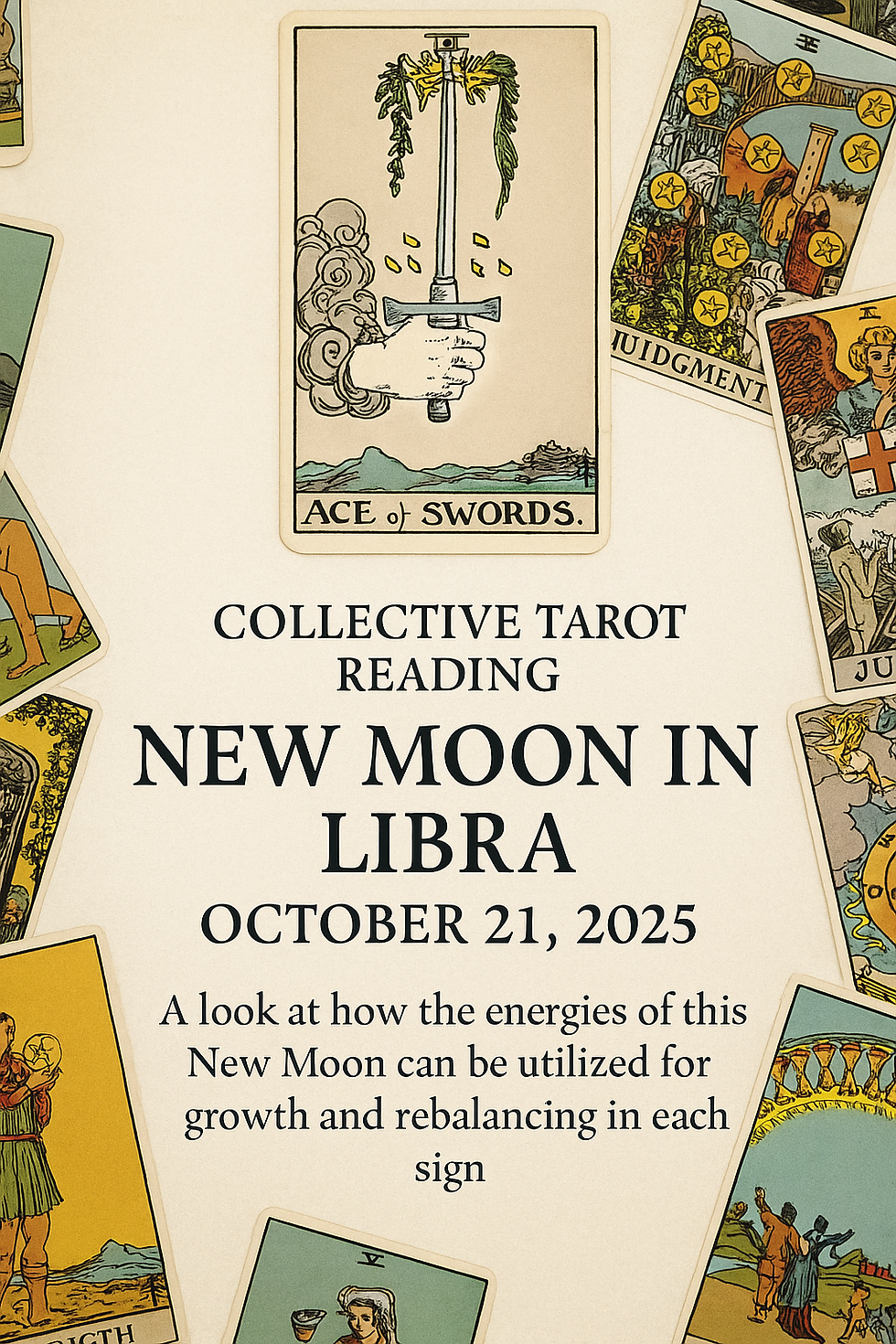The History of Tarot: From Mystical Beginnings to ModernDay Divination
- T'Fawnia Borne

- Jul 5, 2024
- 3 min read
Tarot cards, often shrouded in mystery and mysticism, have fascinated people for centuries. Their evolution from playing cards to tools of divination reflects a rich tapestry of cultural and historical influences. This article explores the intriguing journey of Tarot, tracing its origins, development, and modern-day significance.
Origins and Early History
The Tarot's roots can be traced back to the 15th century in Europe, primarily Italy. Initially, Tarot cards were used for playing a game called Tarocchi. These early decks, known as "carte da trionfi" or triumph cards, featured elaborate artwork and were often commissioned by wealthy patrons. The Visconti-Sforza deck, created for the Duke of Milan, is one of the oldest surviving Tarot decks, showcasing the ornate artistry of the time.

The Evolution of Tarot: From Play to Divination
While Tarot began as a game, it gradually transformed into a divinatory tool. In the late 18th century, the Tarot gained new meaning thanks to the work of French occultists. Jean-Baptiste Alliette, known by his pseudonym Etteilla, was a key figure in this transition. He published the first book on Tarot divination and reinterpreted the cards with esoteric meanings linked to astrology and ancient Egyptian history.
Another significant contributor was Antoine Court de Gébelin, who proposed that Tarot cards were remnants of an ancient Egyptian book of wisdom. Although his theories were speculative, they sparked widespread interest in the occult significance of Tarot.
The Structure of a Tarot Deck
A standard Tarot deck comprises 78 cards, divided into two main sections: the Major Arcana and the Minor Arcana. The Major Arcana comprises 22 cards, each depicting symbolic imagery and representing significant life events or spiritual lessons. Key cards like The Fool, The Magician, and Death have become iconic in popular culture.
The Minor Arcana, consisting of 56 cards, is divided into four suits: Wands, Cups, Swords, and Pentacles. Each suit contains 14 cards, including ten numbered cards and four court cards (Page, Knight, Queen, and King). These cards reflect everyday experiences and situations, providing a more nuanced view of life's journey.
The Golden Dawn and the Rider-Waite-Smith Deck
The late 19th and early 20th centuries saw the rise of influential esoteric societies, such as the Hermetic Order of the Golden Dawn. Members of this group, including Arthur Edward Waite and Pamela Colman Smith, created one of the most enduring and popular Tarot decks: the Rider-Waite-Smith deck. Published in 1909, this deck is notable for its detailed illustrations and rich symbolism, making it accessible and appealing to a broad audience.
Tarot in the 20th Century and Beyond
The 20th century witnessed a Tarot renaissance, fueled by the counterculture movements of the 1960s and 1970s. During this time, Tarot became associated with New Age spirituality and self-exploration. Influential figures like Aleister Crowley further expanded the Tarot's esoteric framework with his Thoth Tarot deck, which incorporated elements of Kabbalah, astrology, and alchemy.
In contemporary times, Tarot continues to evolve. The digital age has introduced new ways of engaging with Tarot, from online readings to apps and virtual communities. The diversity of Tarot decks has also expanded, reflecting a wide range of artistic styles, cultural perspectives, and spiritual traditions.
Conclusion
The history of Tarot is a testament to its enduring appeal and versatility. From its origins as a card game to its role as a tool for divination and self-discovery, Tarot has continually adapted to the changing cultural and spiritual landscape. Today, Tarot remains a powerful means of introspection and guidance, offering insights and inspiration to those who seek its wisdom. Whether viewed as a mystical practice or a psychological tool, Tarot's rich history and symbolism continue to captivate and enlighten people around the world.



Comments